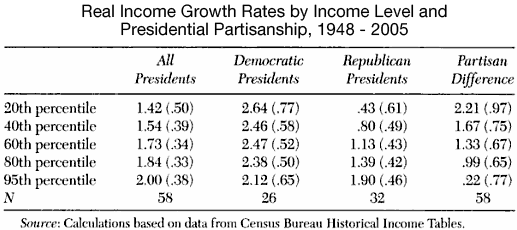I quote from "The United States of Inequality: Trying to understand income inequality, the most profound change in American society in your lifetime" by Timothy Noah, Slate, September 14, 2010.
(I)ncome distribution in the United States is more unequal than in Guyana, Nicaragua, and Venezuela, and roughly on par with Uruguay, Argentina, and Ecuador. Income inequality is actually declining in Latin America even as it continues to increase in the United States.......Today, incomes in the U.S. are more unequal than in Germany, France, and the United Kingdom, not less so.He also addresses the effect of immigration on income inequality:
But when economists look at actual labor markets, most find little evidence that immigration harms the economic interests of native-born Americans, and much evidence that it stimulates the economy. Even the 1980 Mariel boatlift, when Fidel Castro sent 125,000 Cubans to Miami—abruptly expanding the city's labor force by 7 percent—hadvirtually no measurable effect on Miami's wages or unemployment.......And on taxes:
Immigration clearly imposes hardships on the poorest U.S. workers, but its impact on the moderately-skilled middle class—the group whose vanishing job opportunities largely define the Great Divergence—is much smaller. For native-born high-school graduates, Borjas calculated that from 1980 to 2000, immigration drove annual income down 2.1 percent. For native-born workers with "some college," immigration drove annual income down 2.3 percent. Comparable figures for Mexican immigration were 2.2 percent and 2.7 percent. (For all workers, annual income went down 3.7 percent due to all immigration and down 3.4 percent due to Mexican immigration.) To put these numbers in perspective (see Figure 1), the difference between the rate at which the middle fifth of the income distribution grew in after-tax income and the rate at which the top fifth of the income distribution grew during this period was 70 percent. The difference between the middle fifth growth rate and the top 1 percent growth rate was 256 percent.
(T)ax brackets, including the top one, tell you only the marginal tax rate, i.e., the rate on the last dollar earned. The percentage of total income that you actually pay in taxes is known as the effective tax rate. That calculation looks at income taxed at various rates as you move from one bracket to the next; it figures in taxes on capital gains and pensions; it figures in "imputed taxes" such as corporate and payroll taxes paid by your employer (on the theory that if your boss didn't give this money to Uncle Sam he'd give it to you); and it removes from the total any money the federal government paid you in Social Security, welfare, unemployment benefits, or some other benefit. Reagan lowered top marginal tax rates a lot, but he lowered top effective tax rates much less—and certainly not enough to make income-tax policy a major cause of the Great Divergence.
In 1979, the effective tax rate on the top 0.01 percent (i.e., rich people) was 42.9 percent,according to the Congressional Budget Office. By Reagan's last year in office it was 32.2 percent. From 1989 to 2005 (the last year for which data are available), as income inequality continued to climb, the effective tax rate on the top 0.01 percent largely held steady; in most years it remained in the low 30s, surging to 41 during Clinton's first term but falling back during his second, where it remained......
The inequality trend for pre-tax income during this period was much more dramatic. That's why academics concluded that government policy didn't affect U.S. income distribution very much.
And finally:
Who are the Stinking Rich? Their average annual income is about $7 million. Most of them likely work in finance, a sector of the U.S. economy that saw its share of corporate profitsrise from less than 10 percent in 1979 to more than 40 percent in the aughts. The rest of the Stinking Rich are in good measure likely divided between the corporate and entertainment worlds. Among the latter two, the Rich and especially the Stinking Rich are often beneficiaries of the Winner Take All phenomenon (Kaus calls it the "Hollywood Effect"), in which those deemed best in their field are, thanks to improved technology, able to disseminate praise for their work across a broader geographic area and sell their services to many more people than they ever could in the past.
The series of articles makes the case that it is lobbying paid for by the rich, the very rich and the stinking rich that results in policies and institutions which in turn have led to more rapidly increasing wealth for the top 0.1% percent of income earners. A radical change in our political institutions may be necessary to return to a society that is becoming more rather than less egalitarian.



No comments:
Post a Comment